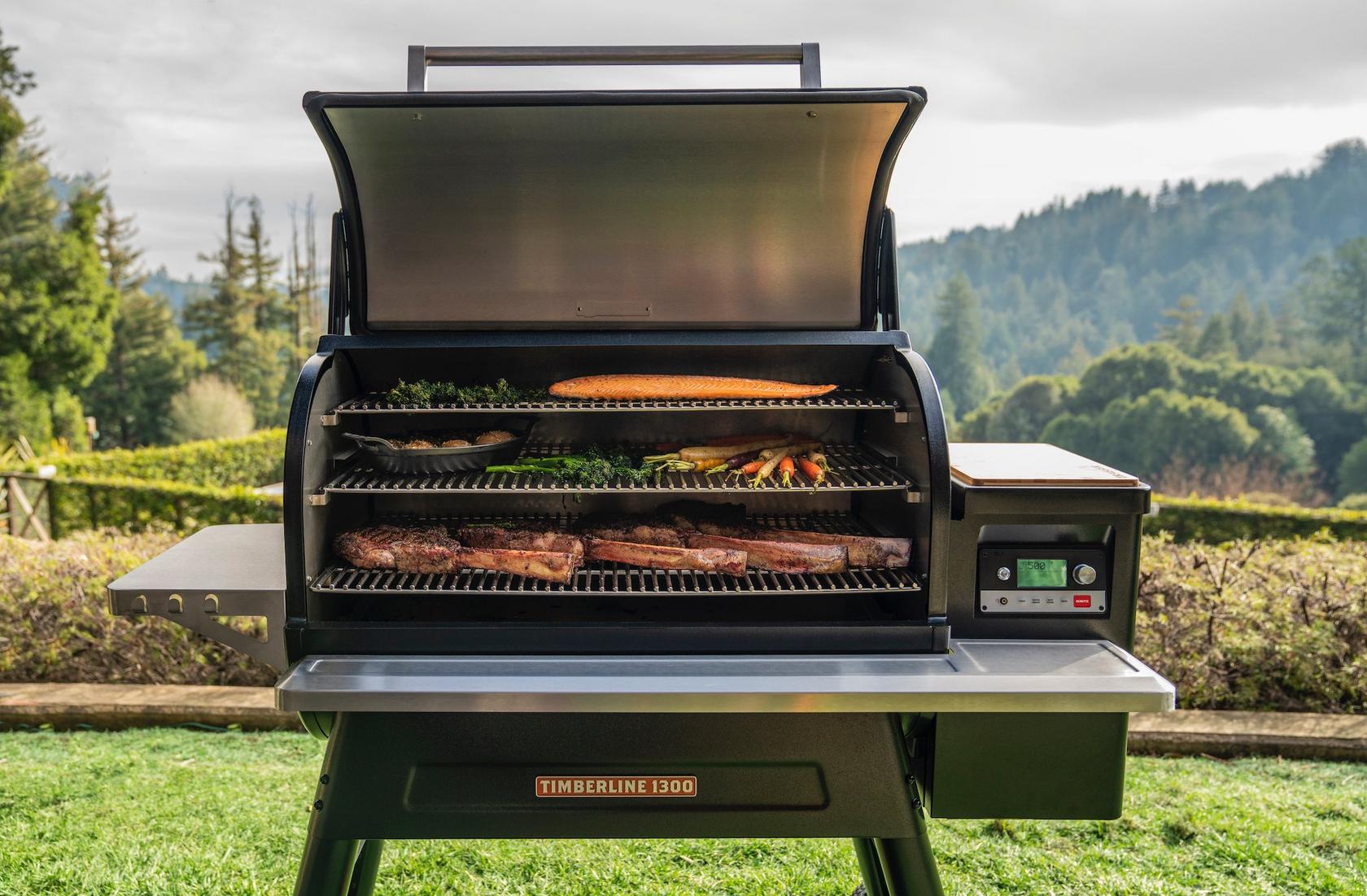
If you’re shopping for your first grill -- or your first grill in a long time -- you’ll notice there are a lot of options out there. Most stores carry dozens of types and models. So, what’s the difference? Different types of grills will require different investments, produce different flavors, and more. But what grill will work best for how and what you want to cook? We’ve put together this guide to help you pick the perfect grill for you and your family.
How Many Types of Grills Are There?
The three most common types of grills are charcoal grills, gas or propane grills, and pellet grills. The biggest difference between these types of grills is the fuel source. The fuel source affects how the grill cooks food and the flavor of the food itself.
What Do You Need To Know or Consider Before Buying a Grill?
Before you dive in and buy a grill, there are things you need to know about them. There are also a couple of things you need to ask yourself: What kind of grilling do you plan on doing most and what is your budget? Here are a few of the biggest considerations to make before choosing a grill.
What Type of Grilling Do You Do?
What kind of grilling do you plan on doing? Is your goal to smoke brisket and whole chickens for your growing family? You’ll be better off with a pellet smoker. Do you want to grill burgers a couple of times a year and get a deep char? Something like a charcoal grill might be all you need. But what if you plan on experimenting with more meats and recipes? In that case, you may want to choose a grill that can accommodate different types and methods of grilling.
Price, Including Fuel Costs
There are plenty of cheap grills out there, but the old adage “you get what you pay for” applies.
Charcoal grills are usually the most affordable type of grill. Most charcoal grills start around $100 but high-end charcoal grills can be thousands of dollars.
A gas grill can cost as little as $100 and as much as $2000.
A wood pellet grill (like a Traeger) typically starts at $500 and goes up to $2000.
You’ll also need to consider fuel costs.
Charcoal can cost $1.70 to $4 per pound and come in 20 pound bags. That adds up to at least $34 per bag. A tank of propane can cost anywhere from $40 to $50 when you buy the tank and $20 to $30 to refill or replace it. Fuel for a pellet grill tends to cost around $19 for a 20 pound bag of wood pellets.
Space and Safety Concerns
Any well-made grill used according to its instructions should be safe, but not every grill is a fit for every environment. One common example is charcoal or open flame gas grills. They aren’t safe on a balcony in most condo or apartment complexes. Many apartment complexes and condos ban such grills in their tenant agreements. Similarly, parents with young children might want to avoid grills with open flames such as gas and charcoal grills.
Features, Durability, and Overall Quality
Above we mentioned you get what you pay for in a grill when it comes to features like durability and quality. Budget grills may be more affordable up front, but if you buy a new one every year, the cost adds up.
Convenience is important, too. Some grills, such as our Traeger Pro 575 Pellet Grill, have WiFi capability. You can check and adjust your grill temperature anytime from anywhere. But if you just want to cook a few burgers every now and then, the features on higher-end models may not matter to you. Look at reviews and features listings to find the right balance.
Pellet Grills
A pellet grill, such as those sold by Traeger, heats and flavors food with hardwood pellets. Unlike gas or charcoal grills, wood pellet grills don’t cook food over an open flame. Rather, pellet grills cook food via indirect heat and smoke. With indirect heat, food cooks evenly with no need to worry about shifting around your chicken to avoid flare-ups and hotspots.
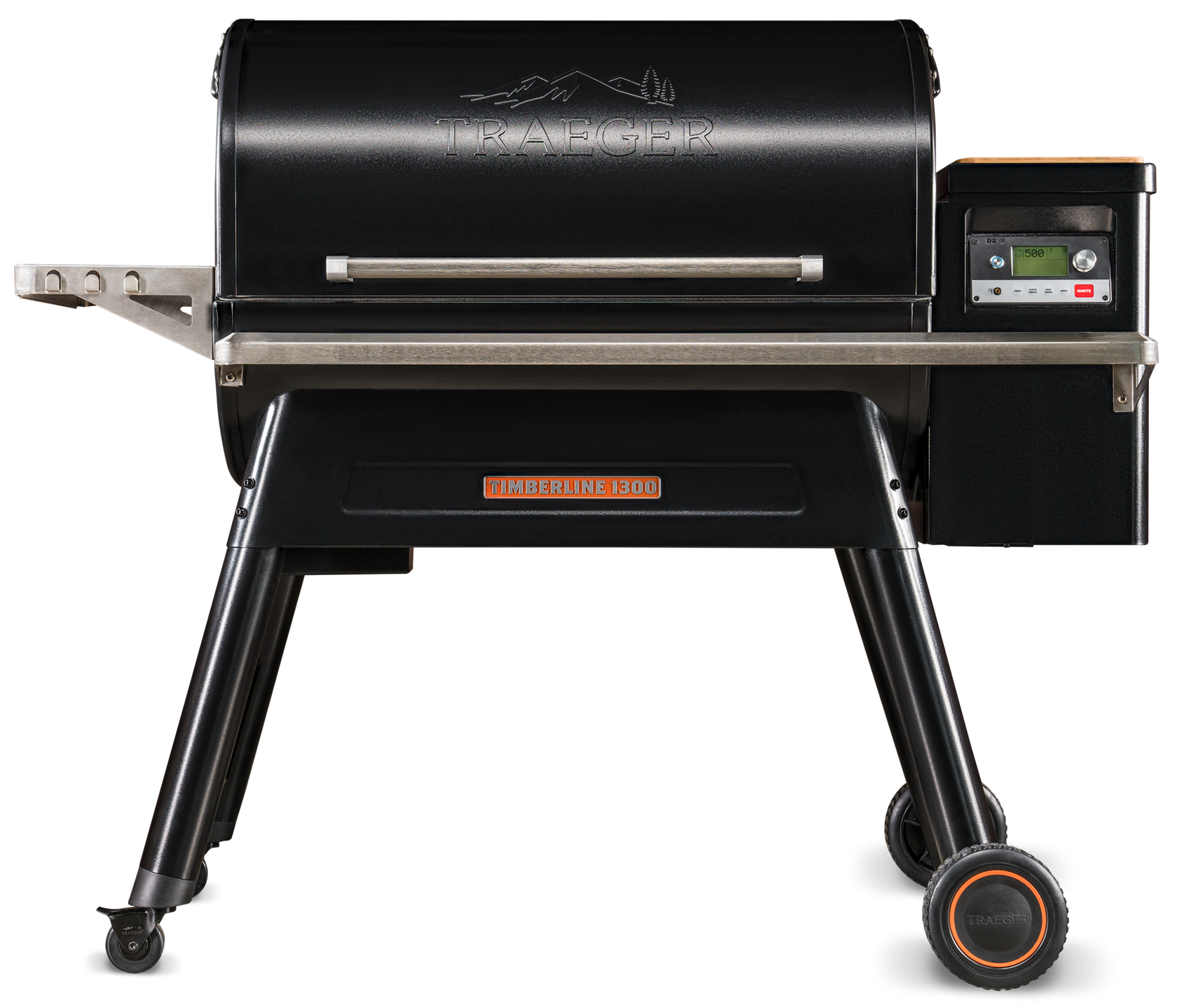
Best Foods for Grilling
Some of the most popular foods to cook on a pellet grill are smoked meats like pulled pork or brisket. However, since a pellet grill functions like an oven, you're not limited to barbecue. With a pellet grill, you can cook steaks, casseroles, sides, desserts, and more. You can even bake bread on a pellet grill.
Cost of the Grill and Fuel
A pellet grill ranges from $500 to $2000. The wood pellets required to fuel a pellet grill typically cost less than $20 for a standard-sized bag of pellets (same as a gas tank).
Pros and Cons
Pros: Pellet grills are a versatile cooking tool. They preheat quickly, you can easily change the temperature, and your food cooks evenly and gets a delicious, smoky flavor. Plus, pellet grills can be used with a variety of cooking methods, including smoking, grilling, braising, roasting, and even baking. Plus, you can set your pellet grill’s temperature and walk away from it—no babysitting required.
Cons: Pellet grills require an electricity source which can make taking them camping or to the beach difficult unless you have a generator or inverter. Some folks will tell you that you can’t get a good sear on a pellet grill, but that’s not true. You can get a traditional or reverse seal on Traeger wood pellet grills because they can reach temperatures of 500 degrees.
Charcoal Grills
A charcoal grill uses charcoal as its fuel source. It’s popular for its portability and generally low cost. However, it comes with a few quirks such as the risk of uneven cooking, flare-ups, and slow warm-up times.
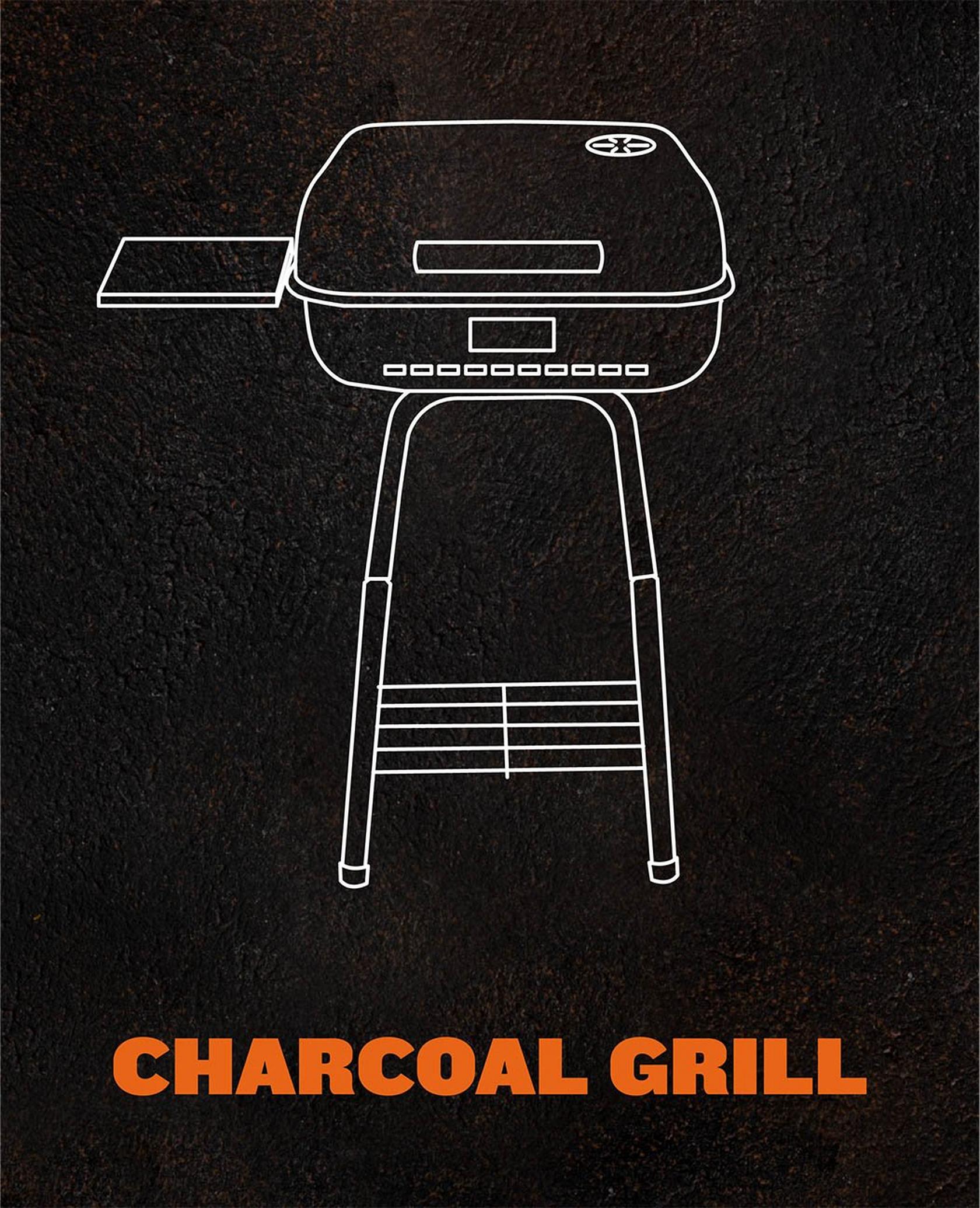
Best Foods for Grilling
Charcoal grills are most commonly used to cook basic grilling staples like burgers, hot dogs, and chicken.
Cost of the Grill and Fuel
Charcoal grills generally start in price at around $100 but can go up to thousands of dollars for heavy-duty models. Charcoal briquettes or lumps typically cost around $20 for a 20-pound bag.
Types of Charcoal Grills
The most common types of charcoal grills are kettle, barrel, and ceramic kamado.
Pros and Cons
Pros: Charcoal grills are affordable, have an easily available fuel source, and are easily found in stores.
Cons: Charcoal grills are slow to heat up, prone to flare-ups, and make it more difficult to evenly cook your food since they naturally have hot and cool spots in the grill.
Gas Grills
Gas grills, also called propane grills, are a backyard standard. As the name implies, their fuel source is propane that is served to the grill via a propane tank.
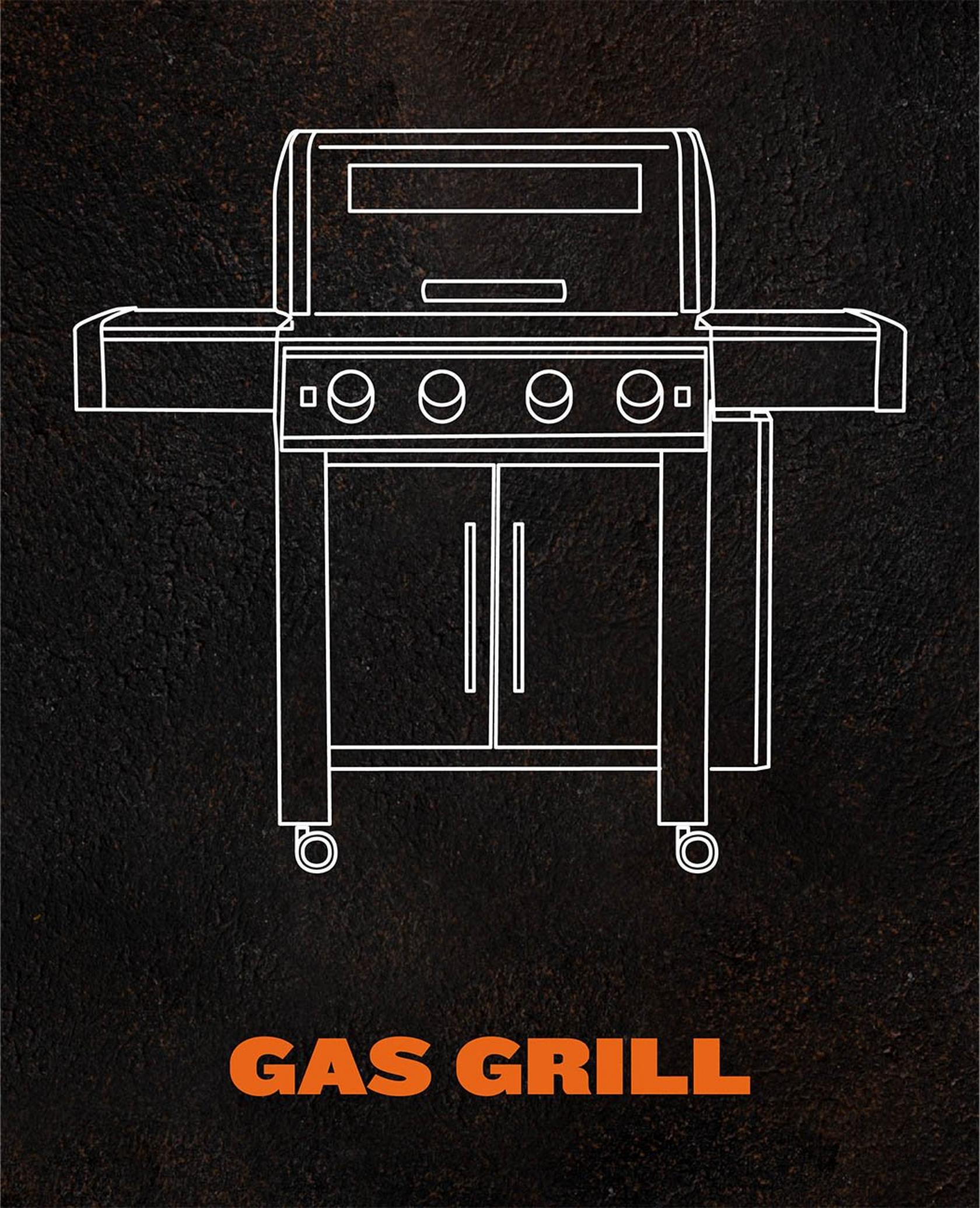
Best Foods for Grilling
Gas grills work well with a variety of foods including hot dogs and burgers. They’re also popular for hearty vegetables such as squash and portobello mushrooms. Gas grills work best when you don’t want or need to add flavor during the cooking process. That’s because gas does not impart any extra flavor to food in the way a pellet grill or charcoal grill would.
Cost of the Grill and Fuel
A gas grill will range in price from just over $100 to over $1000 depending on the brand and its features. A 20-pound propane grill tank generally costs between $20 and $30 but can cost more depending on the current price of propane.
Pros and Cons
Pros: Gas grills are affordable, easy to use, heat up quickly and to high temperatures.
Cons: Unlike pellet or charcoal grills, gas grills don’t add any smoky flavor to the food cooked with them. They’re also prone to flare-ups if grease from food hits the grill’s open flames.
Portable Grills
Portable grills can take a wide variety of shapes and use different types of fuel sources. You can find portable gas grills, portable charcoal grills, and even portable wood pellet grills. Some are great for camping. Others are best for taking to the beach or a tailgate.
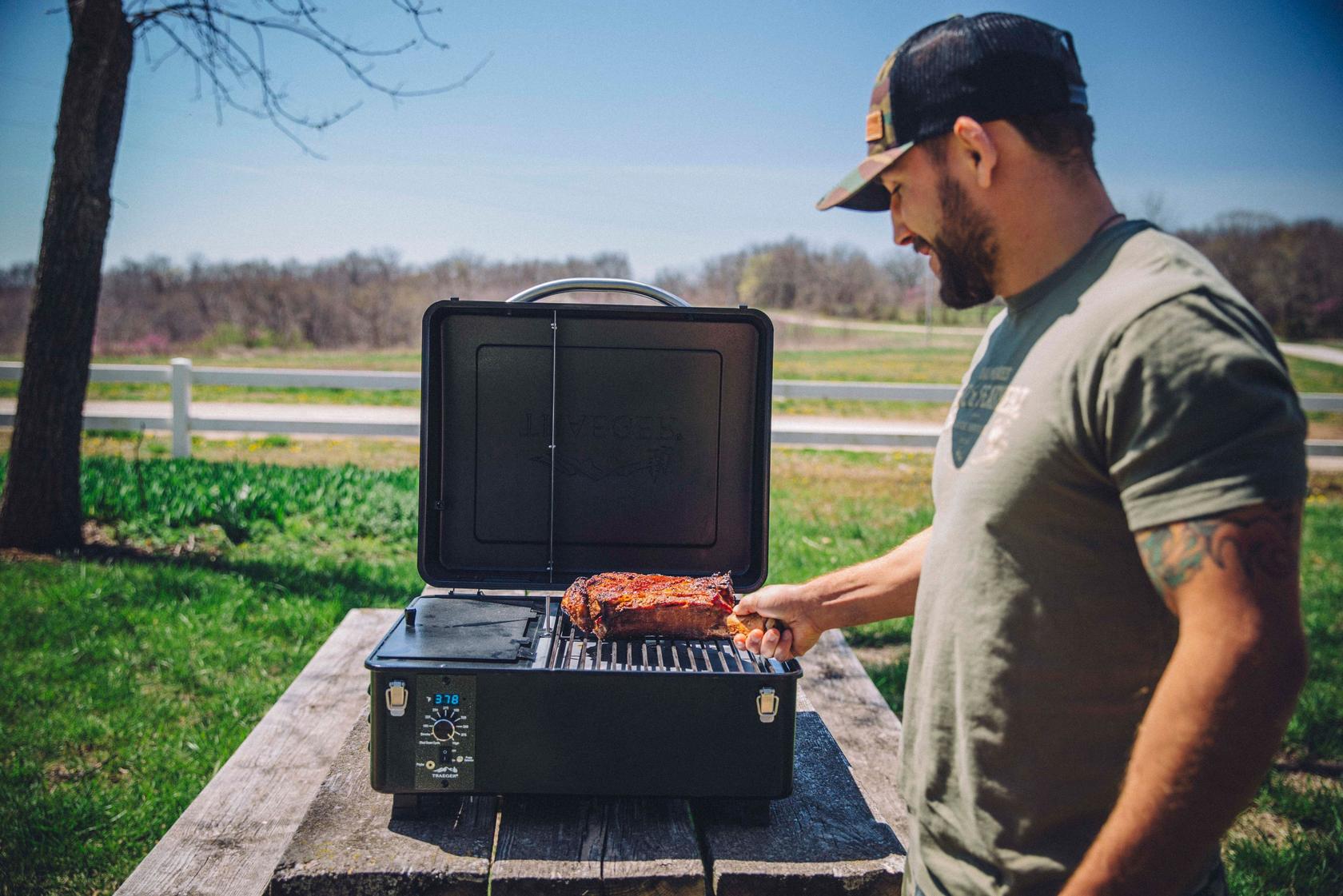
Best Foods for Grilling
Portable grills are smaller by nature, so they’re most popular to use with hot dogs, burgers, and vegetables. However, some portable grills can handle a whole rack of ribs or even a spatchcocked chicken.
Cost of the Grill and Fuel
The cost of a portable grill varies based on its fuel source and brand. A very small portable gas grill can cost as little as $50, and a portable charcoal grill can be found for less. Portable pellet grills are more advanced and offer a more even grilling experience. That's why their price starts in the low hundreds.
Types of Portable Grills
The types of portable grills are portable charcoal grills, portable gas or propane grills, and portable wood pellet grills or smokers.
Pros and Cons
Pros: Portable grills are great for grilling on the go. They’ll keep friends and family fed at tailgates, beach parties, picnics, and camping trips.
Cons: Portable grills can cook less food at once compared to a standard-sized grill so you’re limited in space.
BBQ Smokers
A barbecue smoker is a grill that cooks meat by smoking it via indirect heat. A pellet grill is a type of smoker. Barbecue smokers cook food slowly at lower temperatures and are the best way to cook pork and brisket.
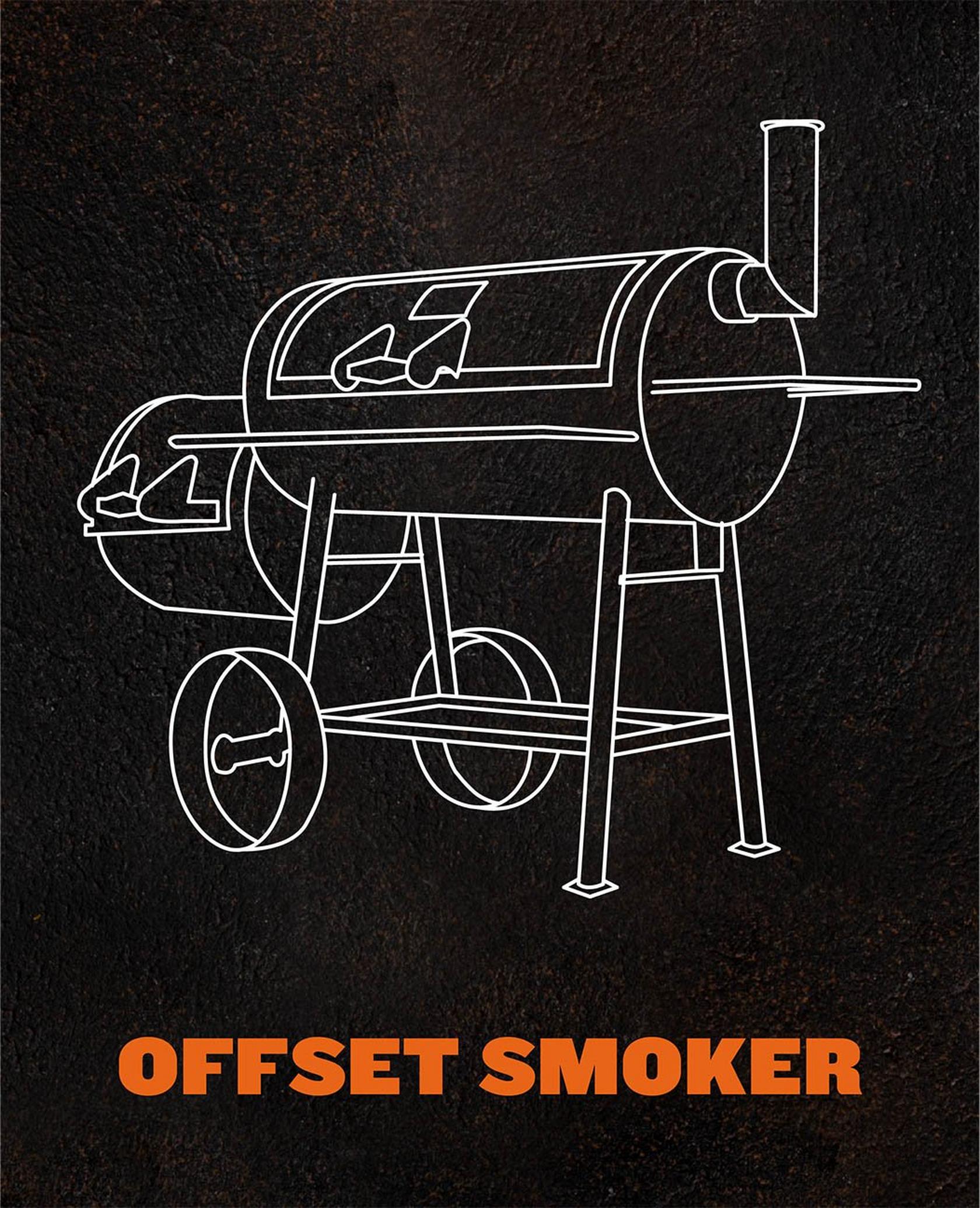
Best Foods for Grilling
Smokers are most popular with barbecue meats such as pulled pork, brisket, and chicken.
Cost of the Grill and Fuel
Different smokers have varying costs and use different types of fuel. Wood pellets are generally the most popular for consumer-grade smokers because they add a natural smoky flavor to food. Small charcoal smokers might cost less than $100. High quality pellet grills may cost upward of $2000.
Different Types of Smokers
There are six different types of barbecue smokers: vertical water smokers, offset smokers, box smokers (aka vault smokers), drum smokers, smoker ovens, kamado grills, and wood pellet grills. Most non-commercial grillmasters prefer the pellet grill or kamado grill smokers.
Pros and Cons
Pros: Barbecue smokers produce delicious pulled pork, brisket, and chicken. They cook meat evenly over a long period of time, and there are no open flames.
Cons: Barbecue smokers can get expensive, and food takes longer to cook. Learning how to use barbecue smokers takes more research than lighting up a grill. You also have to maneuver and manage cooking with wood in order to keep the temperature consistent and even.
Which Type of Grills Should I Consider?
What Is the Healthiest Grill to Use?
Grilling is generally considered a healthy way to cook food. That’s because grease and fat melt away from the meat whereas a pan-fried burger cooks in its own grease. However, char from charcoal grills and some gas grills is carcinogenic. That puts pellet grills and smokers ahead of open flame grills since you’re less likely to burn or char your food.
What Is the Easiest Grill to Use?
Some folks think charcoal and gas grills are easy to use because they’re easy to light, but not everyone agrees. With gas and charcoal grills, you have to babysit your food while it cooks. If you wander off, it could cook unevenly or you could get flare-ups. With a pellet grill, you can have a more hands-off cooking experience. All you have to do is monitor your food as needed. Plus, turning it on is as easy as preheating your oven. Wood pellet grills are so easy to use that some competition BBQers call it “cheating” because it does so much of the work for you!
What Type of Grill Is Best For Smaller Spaces Like Apartments?
Depending on your space, you might not have many grill options. Many apartments don’t allow gas or charcoal grills on balconies because gas and charcoal use open flames and are prone to flare-ups. Wood pellet grills, including portable pellet grills, are generally safe to use on an apartment balcony and are less likely to be banned in a lease because they’re mostly HOA approved.